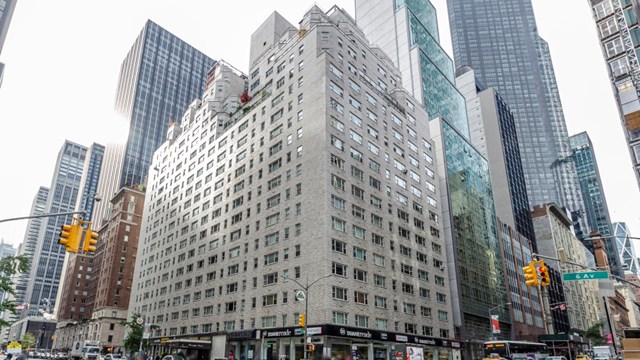Cooperative buildings should be run like businesses, with prudent investing and organized budgeting practices in place. As many buildings that have been on the brink of financial disaster can tell you, if you ignore these aspects of running your co-op, the results can be disastrous. Here we take a look back at several buildings, all of which had experienced serious financial problems, to see how they are faring today.
A board can learn valuable lessons by heeding the warning signs of financial misfortune and mismanagement and by understanding the value of completing timely capital improvements. Boards should also remember that real estate values are cyclical and over time tend to rise. Therefore boards should remember that short-term obstacles like rising interest rates and a weak market can be overcome by stabilizing expenses and keeping on top of repairs through refinancing.
A few years ago, an Upper East Side Manhattan cond-op hired Midboro Management, Inc. as their new managing agent. Robert Grant, Midboro's director of management, quickly learned that there were serious infrastructure issues and financial debts that could deplete the entire reserve fund, and still not cover the costs facing the building.
"Prior management had repeatedly underpaid water and sewer charges," says Grant, "and at the time of the management transition, the building owed over $225,000 to the New York City Department of Environmental Protection (DEP). In addition, liens had been placed on the building by the Department of Finance (DOF) for three years of unpaid water bills dating back to years before the DEP began billing for water and sewer. With interest penalties accruing, an additional $200,000 was owed to the DOF."
Not only that, Grant continues, but the property also had to relocate exposed piping in the halls and fire stairs in order to remove a building-wide violation from the city's Environmental Control Board (ECB). Engineers and architects inspected the piping, reviewed the codes, and informed the building's board that they would have to comply with the order. Cost estimates in this 16-story building ranged from $350,000 to $500,000 for that project alone.
To make matters even worse, leaks from the façade and several terraces were being reported. "We hired an architect to perform a building survey," says Grant, "and the initial report indicated that work performed in past Local Law 10/11 cycles had been done incorrectly - all the necessary repairs to the façade would easily total in excess of $500,000."
"In situations like this," recounts Grant, "you have to roll up your sleeves and systematically examine every issue, from every angle. You have to reconstruct the history, look at every options, and work at each one tirelessly until you find a way to get some relief for the building."
To stop further late penalty charges, the management had the building pay the outstanding DEP and DOF water bills. While researching the DOF and DEP payment history, Grant found some duplicate billing, and negotiated some forgiveness of interest penalties, thus reducing the combined outstanding water and sewer charges by more than $125,000.
The exposed pipe violations were thought to be an insurmountable problem. In preparation for the ECB hearing, Grant says Midboro put together a professional team of consultants, including a law firm that specialized in representing clients going before the ECB on complex issues, and a prominent engineering firm which had historically assisted the DOB in revising and modernizing the city's mechanical building codes. "In the end," according to Grant, "compelling and novel arguments [in law and engineering] were presented so persuasively that the violation was removed. The savings to the building and the residents in cost, time and disturbance avoided was almost immeasurable."
Other fundamental cost saving measures were introduced, which included significant adjustments to the heating plant and controls to run the boilers in a balanced and efficient manner. That led to a savings of $15,000 to $20,000 in fuel consumption this past winter.
Finally, with the help of a new building attorney, the cond-op began to successfully collect a flip tax from its sponsor, who had failed to exempt himself from paying the flip tax in the original offering plan and in subsequent flip tax amendments. In addition to that, Grant says that work on the infrastructure is now being prioritized and spread over five years. The cond-op is moving forward with a solid plan, which so far has not involved a maintenance increase, and is beginning to experience financial health and stability.
Another co-op development reports similar problems in the way maintenance problems were ignored for years. Ever since the Holtsville-N.Y.-Birchwood Glen was converted from an apartment rental complex to co-op units in 1985, the Suffolk County property rode down the path towards financial disaster.
According to Bill Hoolahan of Century Management Services, the property manager for the 364 garden-style units since 1995, the community has made "a 180-degree turnaround" financially.
"Work wasn't done and that's what caused the problem," says Hoolahan. "The board, at the time, was kind of proud of the fact that they never raised the maintenance fee. But maintenance is the backbone, financially, of any co-op."
When Hoolahan came on board in 1995, so did Dan Weynand as board president. Weynand, who still serves as president today, began researching the building's problems. One of his first orders of business was to hire an engineering and architectural firm to take an overall look at the property to see what fire should be put out first.
Priorities were set, and from 1996 to 1998, the board set into place a capital improvement plan that enabled them to complete some necessary repairs. However, the money in the reserve fund dwindled down to nothing before too long, and as 1998 approached, the board began to think about refinancing options to free up some extra cash. After realizing that refinancing would bring about a significant pre-payment penalty, Weynand looked to National Cooperative Bank (NCB) for help. This bank was able to offer Birchwood Glen a $2.5 million line of credit to finish the improvements on the 46-acre property. Among other repairs, Birchwood Glen was able to upgrade the eight boiler rooms, complete major façade work, repave all of the main roads and parking lots and install new energy-efficient windows and patio doors.
"From the beginning, a capital improvement program should have been put into place to keep up with the physical aspects of the community," says Hoolahan. "Small maintenance increases should have [occurred from the beginning. The [former] board should have increased the maintenance fee every year by 2 percent or at least made an effort to keep up with the cost of living - whether it's a loaf of bread or an automobile, everything goes up." And, he adds, "If maintenance fees don't go up, too, then how in the world do you expect to keep up with the financial health of the community?"
The turnaround has been striking. In the summer of 1995, co-op apartments at Birchwood Glen were selling in the mid-$30,000 range. Just recently, a two-bedroom unit sold for $189,000.
"People are so pleased that the value of their homes has jumped in a few short years," says Hoolahan. "Real estate agents come to us and tell us that Birchwood Glen is a "˜hot property.' I feel pretty darn good about that."
Benjamin Barshay has another story to tell, beginning with his joining the co-op board of 33 Greenwich in Manhattan as board president. Barshay, of Barshay Real Estate Group in Manhattan, is still on the board today and has seen his cooperative completely turn itself around.
When the underlying mortgage came due on this property in 1992, a real estate recession was clouding the market and interest rates were high. This building found it difficult - as did many other co-ops at the time - to find financing because of their financial makeup. Banks were wary of buildings that had negative cash flow and needed extensive capital improvements.The bank holding the mortgage at that time was Crossland Savings Bank, which began foreclosure proceedings on the building.
"When I came aboard in 1995, what happened was interesting,". remembers Barshay. "Crossland themselves went defunct and sold off their portfolio to other investment groups. We got sold to Whitehall Investment Group and, when they took over the loan, things began to change. One of the things I did, at that point, was bring in a financial advisor agency - Chusid and Associates - which had success in our restructure process."
Whitehall, being very business-oriented, sought to make the co-op profitable. As such, the bank, which had bought the loan for fractions on the dollar, began to analyze how much the 33 Greenwich would be worth as a rental as opposed to a co-op.
Barshay and his board, along with Chusid and Associates, began working on how they would get the money to buy out the loan. Finally, after about a year and a half, Candee Chusid, principal of the agency, found a bank that would agree to look at them. City and Suburban of Westchester agreed to loan the money to 33 Greenwich Owners Corp. and the building came out of foreclosure.
Immediately thereafter, in 1998, the board put into place a capital improvement program that called for things such as façade restoration work and new heating and plumbing systems over a six-year time period. As the marketplace improved, selling prices became better and banks became more lenient. Barshay, with Chusid's help, decided to look into refinancing and ended up getting a more competitive rate from Dime Savings Bank.
33 Greenwich was no longer a "building on the brink" and had turned around financially. As a direct result of the newest refinancing, the board was able to improve the property even further with a new roof, pointed brickwork, new terraces, upgraded hot water tanks, infrastructure improvements, new elevators and other cosmetic work.
"It's a success story," says Barshay. "We were on the brink. We had to stay focused on what was best for everybody to save their investment since it was very real that we might lose that investment. But we succeeded."







Comments
Leave a Comment